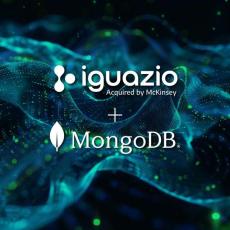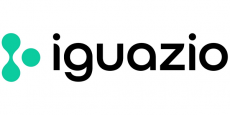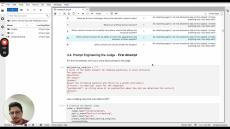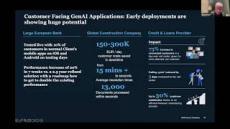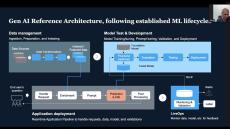If 2023 was the year of gen experimentation, 2024 is the year of gen AI implementation. As companies embark on their implementation journey, they need to deal with a host of challenges, like performance, GPU efficiency and LLM risks. These challenges are exacerbated in highly-regulated industries, such as financial services and telecommunication, adding further implementation complexities. Below, we discuss these challenges and present some best practices and solutions to take into consideration.
AI and generative Al can lead to major enterprise advancements and productivity gains. By offering new capabilities, they open up opportunities for enhancing customer engagement, content creation, virtual experts, process automation and optimization, and more.
|
By Alexandra Quinn
RAG and Fine-Tuning are two prominent LLM customization approaches. While RAG involves providing external and dynamic resources to trained models, fine-tuning involves further training on specialized datasets, altering the model. Each approach can be used for different use cases. In this blog post, we explain each approach, compare the two and recommend when to use them and which pitfalls to avoid.
|
By Guy Lecker
As can be inferred from their name, foundation models are the foundation upon which developers build AI applications for tasks like language translation, text summarization, sentiment analysis and more. Models such as OpenAI's GPT, Google's Gemini, Meta’s Llama and Anthropic’s Claude, are pre-trained on vast amounts of text data and have the capability to understand and generate human-like language.
|
By Alexandra Quinn
Enterprises are beginning to implement gen AI across use cases, realizing its enormous potential to deliver value. Since we are all charting new technological waters, being mindful of recommended strategies, pitfalls to avoid and lessons learned can assist with the process and help drive business impact and productivity. In this blog post, we provide a number of frameworks that can help enterprises effectively implement and scale gen AI while avoiding risk.
|
By Nick Schenone
The generative AI industry is changing fast. New models and technologies (Hello GPT-4o) are emerging regularly, each more advanced than the last. This rapid development cycle means that what was cutting-edge a year ago might now be considered outdated. The rate of change demands a culture of continuous learning and technological adaptation.
|
By Alexandra Quinn
LLM evaluation is the process of assessing the performance and capabilities of LLMs. This helps determine how well the model understands and generates language, ensuring that it meets the specific needs of applications. There are multiple ways to perform LLM evaluation, each with different advantages. In this blog post, we explain the role of LLM evaluation in AI lifecycles and the different types of LLM evaluation methods. In the end, we show a demo of a chatbot that was developed with crowdsourcing.
|
By Nick Schenone
Ever since the release of ChatGPT in November 2022, organizations have been trying to find new and innovative ways to leverage gen AI to drive organizational growth. LLM capabilities like contextual understanding and response to natural language prompts enable the development of applications like automated AI chatbots, smart call center apps, or for financial services.
|
By Alexandra Quinn
Organizations that monitor their LLMs will benefit from higher performing models at higher efficiency, while meeting ethical considerations like ensuring privacy and eliminating bias and toxicity. In this blog post, we bring the top LLM metrics we recommend measuring and when to use each one. In the end, we explain how to implement these metrics in your ML and gen AI pipelines.
Customer care organizations are facing the disruptions of an AI-enabled future, and gen AI is already impacting customer care organizations across use cases like agent co-pilots, summarizing calls and deriving insights, creating chatbots and more. In this blog post, we dive deep into these use cases and their business and operational impact. Then we show a demo of a call center app based on gen AI that you can follow along.
|
By Iguazio
See how to use MLRun 1.7 to fine-tune a generative AI banking chatbot, ensuring it answers only relevant banking inquiries. Watch the full tutorial and follow along!
|
By Iguazio
This demo recorded during our MLOps Live Webinar #32 showcases a customer-facing AI agent developed for a jewelry retailer. This can be used as a marketing tool to offer personalized product recommendations and purchasing information and support.
|
By Iguazio
In this MLOps Live session we were joined by Eli Stein, Partner and Modern Marketing Capabilities Leader at McKinsey, to delve into how data scientists can leverage generative AI to support the company’s marketing strategy. We showcased a live demo of a customer-facing AI agent developed for a jewelry retailer, which can be used as a marketing tool to offer personalized product recommendations and purchasing information and support. Following the demo, we held an interactive discussion and Q&A session. Enjoy!
Building Customer-Facing Gen AI Applications Effectively & Responsibly - MLOps Live #31 with MongoDB
|
By Iguazio
In this session, we explored the unique challenges of implementing gen AI in production environments, when agents are in direct contact with your customers. We shared the Iguazio & MongoDB one-stop-shop solution for building gen AI applications that scale effectively and efficiently, with built-in guardrails and monitoring. We'll show how the end-to-end application lifecycle is addressed – From data management all the way to governance and monitoring in production.
|
By Iguazio
In this webinar we discussed the transformative impact of gen AI on enterprise operations, spotlighting advancements across manufacturing, supply chain and procurement. We covered the main gen AI use cases, challenges to be mindful of during implementation and key learnings from client projects; highlighting three main pillars –people, processes and technology.
|
By Iguazio
Watch session #28 in our MLOps Live Webinar Series featuring Databricks where we discuss improving LLM accuracy & performance. Hear Margaret Amori (Databricks), Vijay Balasubramaniam (Databricks) , and Yaron Haviv (Iguazio) share best practices and pragmatic advice on successfully improving the accuracy and performance of LLMs while mitigating challenges like risks and escalating costs. See real examples including techniques to overcome common challenges using tools such as Databricks Mosaic AI and their new open LLM, DBRX.
|
By Iguazio
In this session, Yaron Haviv, CTO Iguazio was joined by Ehud Barnea, PHD, Head of AI at Tasq.ai and Guy Lecker ML Engineering Team Lead, Iguazio to discuss how to validate, evaluate and fine tune an LLM effectively. They shared firsthand tips of how to solve the production hurdle of LLM evaluation, improving LLM performance, eliminating risks, along with a live demo of a fashion chatbot that leverages fine-tuning to significantly improve the model responses.
- October 2024 (1)
- September 2024 (2)
- August 2024 (2)
- July 2024 (5)
- June 2024 (2)
- May 2024 (4)
- April 2024 (2)
- March 2024 (5)
- February 2024 (5)
- January 2024 (4)
- December 2023 (2)
- November 2023 (2)
- September 2023 (3)
- August 2023 (3)
- July 2023 (2)
- June 2023 (3)
- May 2023 (3)
- April 2023 (1)
- March 2023 (3)
- February 2023 (1)
- January 2023 (1)
- December 2022 (4)
- November 2022 (2)
- October 2022 (6)
- September 2022 (2)
- August 2022 (16)
- July 2022 (7)
- June 2022 (3)
- May 2022 (4)
- April 2022 (4)
- March 2022 (5)
- February 2022 (2)
- January 2022 (4)
- December 2021 (4)
- November 2021 (4)
- October 2021 (3)
- September 2021 (5)
- August 2021 (3)
- July 2021 (2)
- June 2021 (5)
- May 2021 (10)
- April 2021 (3)
- March 2021 (1)
- February 2021 (2)
- January 2021 (5)
- December 2020 (2)
- November 2020 (7)
- October 2020 (6)
- September 2020 (5)
- August 2020 (2)
- July 2020 (3)
- June 2020 (4)
- May 2020 (4)
- April 2020 (2)
- January 2020 (2)
- December 2019 (1)
The Iguazio Data Science Platform automates MLOps with end-to-end machine learning pipelines, transforming AI projects into real-world business outcomes. It accelerates the development, deployment and management of AI applications at scale, enabling data scientists to focus on delivering better, more accurate and more powerful solutions instead of spending their time on infrastructure.
The platform is open and deployable anywhere - multi-cloud, on prem or edge. Iguazio powers real-time data science applications for financial services, gaming, ad-tech, manufacturing, smart mobility and telecoms.
Dive Into the Machine Learning Pipeline:
- Collect and Enrich Data from Any Source: Ingest in real-time multi-model data at scale, including event-driven streaming, time series, NoSQL, SQL and files.
- Prepare Online and Offline Data at Scale: Explore and manipulate online and offline data at scale, powered by Iguazio's real-time data layer and using your favorite data science and analytics frameworks, already pre-installed in the platform.
- Accelerate and Automate Model Training: Continuously train models in a production-like environment, dynamically scaling GPUs and managed machine learning frameworks.
- Deploy in Seconds: Deploy models and APIs from a Jupyter notebook or IDE to production in just a few clicks and continuously monitor model performance.
Bring Your Data Science to Life.



